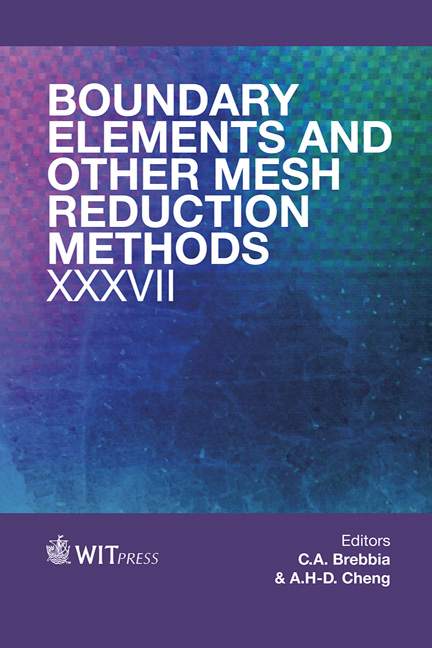The Meshfree Computation Of Stationary Electric Current Densities In Complex Shaped Conductors Using 3D Boundary Element Methods
Price
Free (open access)
Transaction
Volume
57
Pages
13
Page Range
121 - 133
Published
2014
Size
2800 kb
Paper DOI
10.2495/BE370111
Copyright
WIT Press
Author(s)
A. Buchau, W. M. Rucker
Abstract
Stationary electric current problems are based on the solution of Laplace equation for the scalar electric potential within each domain of piecewise homogeneous media. The scalar electric potential is continuous at domain interfaces along with the normal component of the electric current density, which is obtained from the normal derivative of the scalar electric potential. An indirect boundary element method is applied for the numerical solution of the three-dimensional problem. The matrix of the corresponding system of linear equations is compressed using the fast multipole method. Here, the focus is on a flexible and meshfree post-processing of the solved problem. The computation of the electric current density requires the electric conductivity of material at the position of the arbitrary chosen evaluation point. A completely automatic domain detection is necessary, if the post-processing is performed without an auxiliary volume mesh. The position of evaluation point is obtained directly from the boundary element mesh, which is used for the solution of the problem. Relevant boundary elements are filtered by an application of a flexible adaptive octree scheme, which is similar to the one of the fast multipole method. An algorithm comparable to ray-tracing is applied to detect the position of the evaluation point with respect to the set of filtered boundary elements. Field values at the evaluation point are obtained based on a reversed flexible fast multipole method scheme. In total, the presented method enables a fast, efficient, and robust post-processing in arbitrary points even in the case of complex shaped boundaries. Evaluation points can be chosen, for instance during the computation of streamlines or in planes, with an almost arbitrary spatial resolution without expensive pre-computations.
Keywords
boundary element methods, fast multipole method, Laplace equations, meshfree post-processing, visualization





